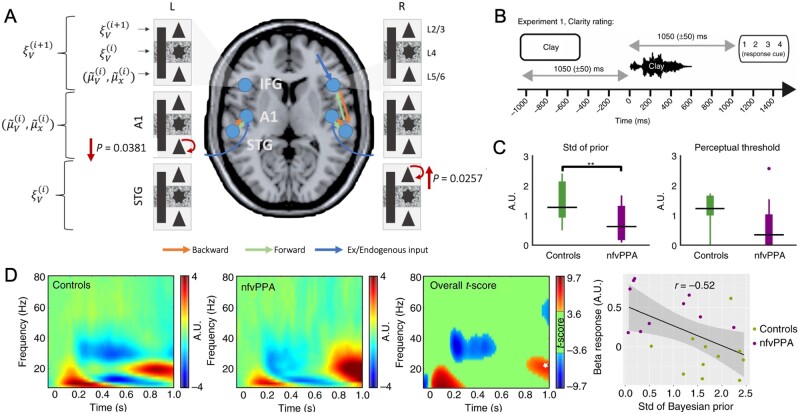Figure 2.
Neurophysiological changes associated with predictive coding impairments. (A) Cortical microcircuit dynamic causal model of the mismatch negativity response in patients with behavioural variant frontotemporal dementia, compared with healthy controls. Local (intrinsic) decreases in self-modulation of the deep pyramidal cells in the primary auditory cortex (A1), and increases in self-modulation of the superficial pyramidal cells in the superior temporal gyrus, lead to failure to establish sensory predictions and thereby reduced mismatch response. (B) Illustration of the MEG paradigm used by Cope et al.,186 in which participants were presented with a written word followed by a noise vocoded spoken word that either matched or mismatched with the written word. Participants rated the clarity of the spoken words. (C) Derived parameters from Bayesian data modelling show that patients with non-fluent primary progressive aphasia (nvPPA) had more precise priors (smaller variance) than controls. A.U. = arbitrary units. (D) Induced responses between the cue offset and spoken word onset: beta power was higher in the nvPPA group after 800 ms and negatively correlated with precision of the prior expectations. A is reprinted from Shaw et al.22 with permission. B–D are reprinted from Cope et al.186 with permission.

